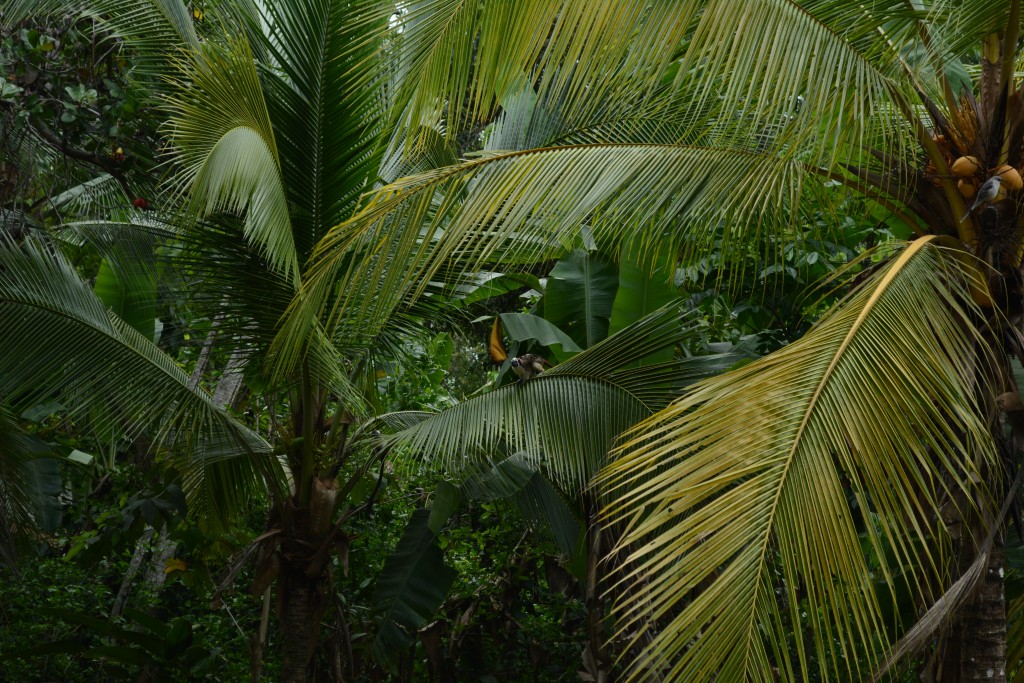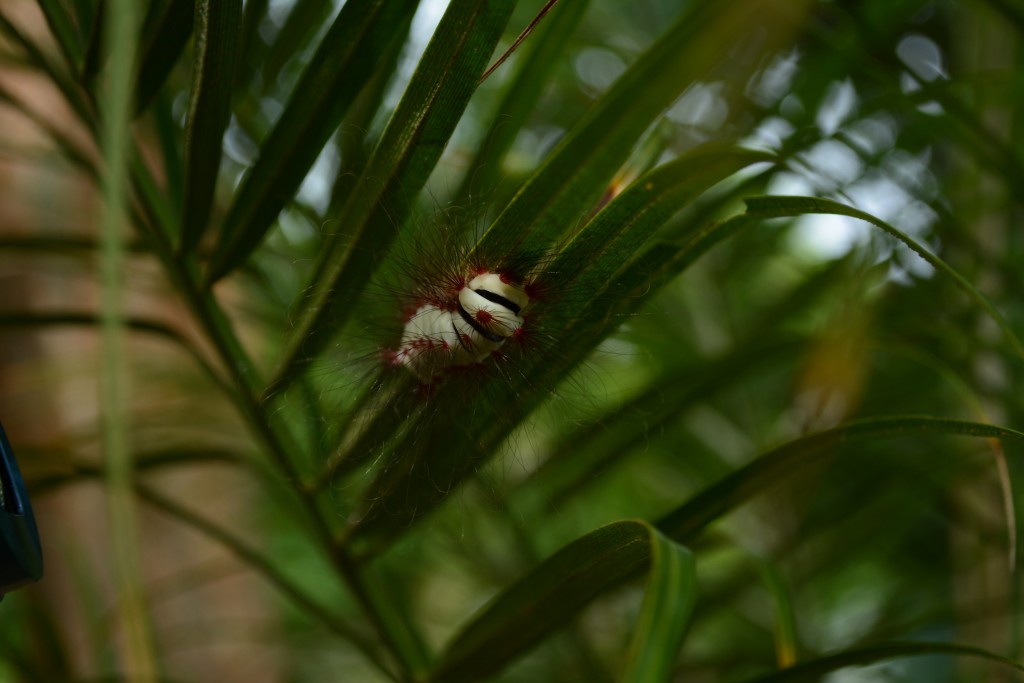On our first outing today along the streets and through the forests of Gamboa, we saw species we predicted we’d see, others we hoped to see, and still others we didn’t know to expect. Although my brain is currently filled with newly-learned facts and recent observations, I think that it would be more appropriate for this inaugural blog post to reveal some of the sublime biodiversity we’ve already managed to encounter. A few of my fellow classmates saw toucans before our first morning lecture, perched in trees near the schoolhouse. Our TA Alex recognized Geoffrey’s tamarin (a small monkey) on the fronds of roadside palms. Agoutis, which are Central and South American tropical rodents, crossed the quiet roads and moved through nearby residential yards. Leaf-cutter ants marched dedicatedly across impressive distances, delivering plant material to their colony for their fungus-farming operations. A golden orbweaver spider rested on its delicate gossamer home on the porch of an old abandoned house. For those of us who haven’t explored the tropics in the Neotropics (i.e., the ecological region that includes Central and South America as well as parts of the Caribbean and Mexico), there are too many things to see at once and probably already too few days remaining in our visit to Panama.
The following video shows leaf-cutter ant workers moving about a plant from which they were collecting leaf material:
Perhaps even more exciting are the unidentified finds of the day, especially those that we didn’t know to look for– the ones we couldn’t have predicted from our North American home. Among them were an unusually pigmented lichen, colorful bugs, trees with elusive identification traits, and birds with discerning markings keeping their safe distance. What we don’t know, the parts of ecological stories we haven’t learned– these undiscovered details span broad gaps between our limited facts and anecdotes.

An unusual species of lichen, with red speckling the typical gray-green and outlining the lichen’s perimeter

An unrecognized species, with flowers akin to those of the Mimosaceae but leaves unlike most mimosa plant species
We stay refreshingly hyper-vigilant on our lookout for noteworthy species. Our meandering walk was mostly accompanied by the sounds of our voices 1) getting the attention of everyone else as we pointed out something interesting, and 2) barraging Dr. Hovick, Alex, and each other with questions about the ecosystem and its inhabitants. Nothing is commonplace for us here (at least not yet), and tomorrow I will start a list of our questions that aren’t easily answered so that we can remember to research them later and fill in the blank spaces of our knowledge, bridging the gaps with literature research and investigative observations. Later on in our course I’ll publish these questions and answers (or, at least, speculations on the blog to illustrate the benefits of first-hand experience for curiosity, inquisitiveness, and understanding.






Gorgeous photos, Katherine! I’m glad its a great trip so far.